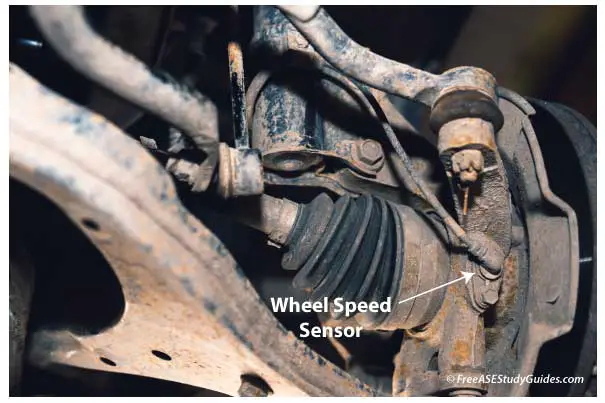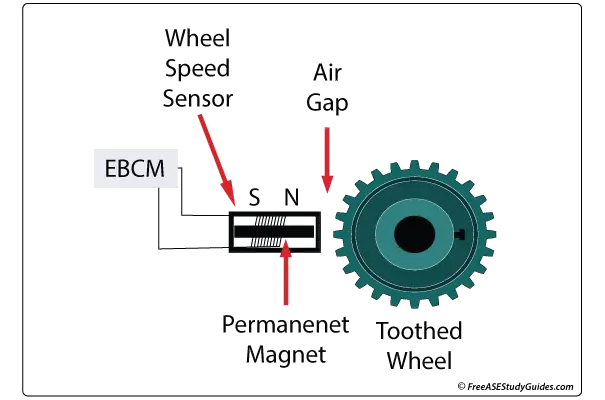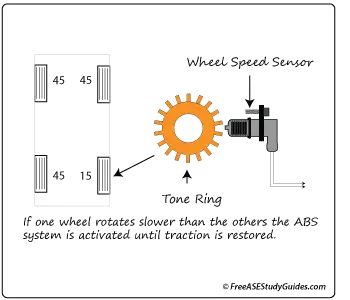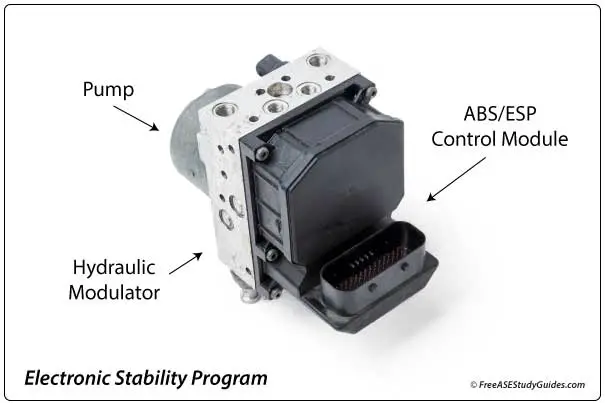Wheel Speed Sensors

Wheel speed sensors are a necessary ABS component and sensor input. It is used to inform the ABS control module of rotational wheel speed.

Two types of sensors are found on today's vehicles: the passive and the active. The conventional passive sensor comprises a magnetic pin with fine copper wire wrapped around it to create a magnetic field. This sensor changes polarity as a toothed metal ring, called a tone ring, passes through its field. The tone ring is attached to a part rotating at the same speed as the wheel, such as an outboard CV joint, the axle shaft, or the differential of a rear-wheel-drive vehicle.

When the signal is affected by a weak sensor, damaged tone ring, or debris, a false cycling problem results. False cycling is unwarranted activation of the ABS, usually at slow speeds and at the end of a stop cycle. This traditional type of PM sensor, similar to those implemented on crankshaft and camshaft systems, had a few pitfalls. These include limited operation at low speeds and the inability to operate in reverse.

A passive sensor creates an AC signal that changes frequency as the wheel changes speed. The ABS control module converts this AC signal to a digital signal for interpretation. It monitors all-wheel speed inputs. When one wheel starts to rotate slower than the others, the system reduces hydraulic pressure to the brake unit, preventing a skid by allowing it to spin until it regains traction.
An active wheel speed sensor creates a digital signal. This digital wheel speed sensor uses a hall effect or variable reluctance signal with a square wave pattern. The sensor may have two or three wires. One is used as a voltage power supply from the ABS control module. A digital sensor has more accuracy at slow speeds. It's also capable of detecting which direction the wheel is turning.